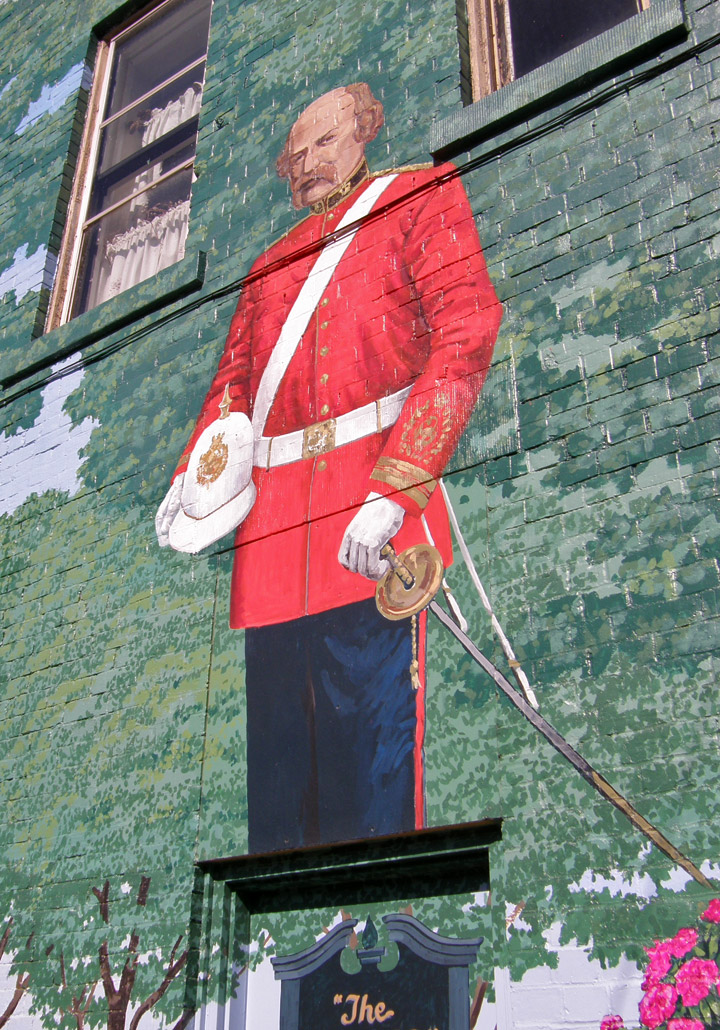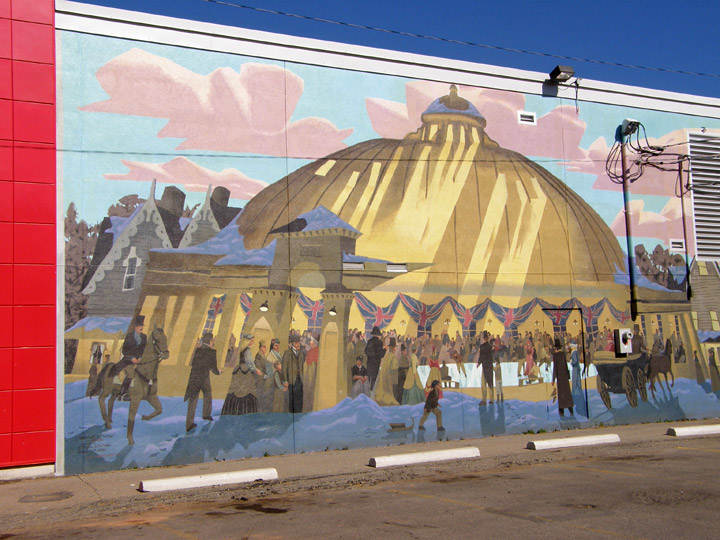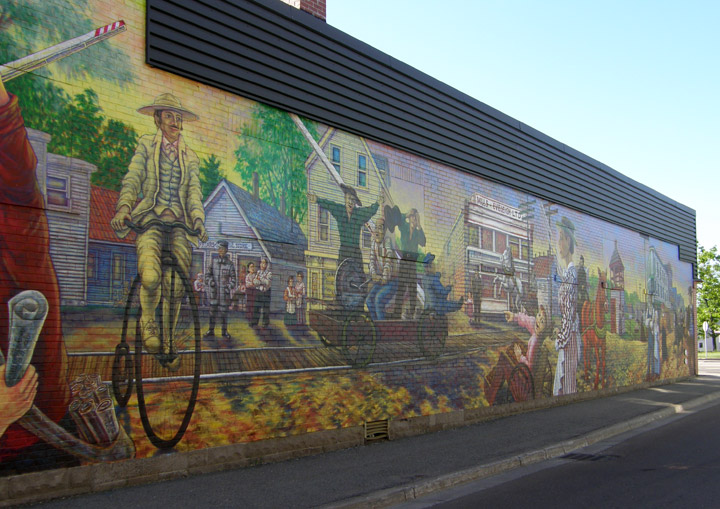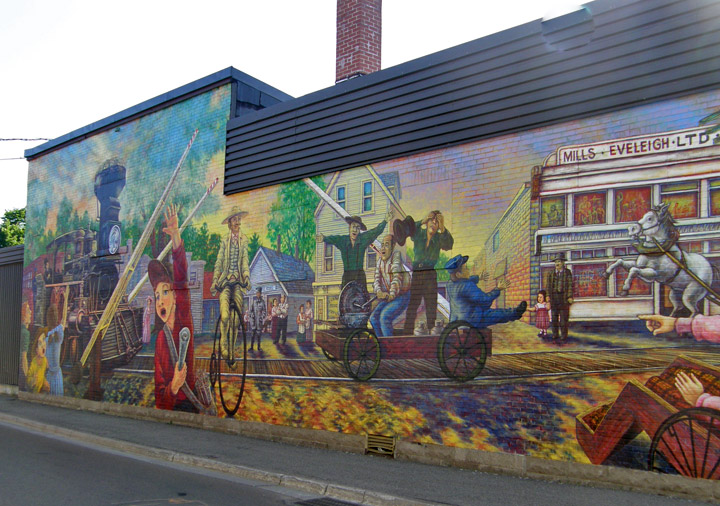

Sussex

Sussex is a Canadian town in Kings County, New Brunswick.

Sussex straddles the Kennebecasis River, 70 km northeast of Saint John.
In 1857 the European and North
American Railway was opened, connecting the farming communities of the
Kennebecasis River valley with Saint John and Moncton. Sussex was incorporated
in 1895 but was only officially established as a town on April 30, 1904. The
settlers were for the most part British Loyalists who had fled the American
Revolution in 1776, with many Irish refugees of the potato famine from the
mid-1800s settling in the nearby farming communities.
In 1885 the Sussex Military Camp was established on the eastern edge of the
town. The facility was closed following the Second World War and the town
purchased the land to expand the municipal boundaries. Today the agricultural
exhibition and some areas remain as open land on the former site of Camp Sussex.

Sussex underwent several changes in the post-war period. In the early 1960s,
several local roads were upgraded as part of the Trans-Canada Highway project
which saw New Brunswick Highway 2 pass immediately north of the town between
Fredericton and Moncton. At the same time, a series of local roads in the
Kennebecasis River valley were designated as New Brunswick Highway 1, running
from an interchange with the Trans-Canada at Sussex, southwest to Saint John.
The creation of Sussex as a highway interchange in this post-war period led to
some transportation planners in New Brunswick calling for the consolidation or
closure of the Fredericton, Saint John, and Moncton airports to be replaced by a
single airport located in Sussex to serve all three population centers of
southern New Brunswick; this being in the late 1950s/early 1960s before these
facilities underwent considerable expansion.

Potash was subsequently discovered in large quantities in the area surrounding
Sussex, with the deposit being the second largest in the world after an area in
Saskatchewan. Two mines were built near the town, one at Penobsquis 8 km east,
and another at Cassidy Lake, 10 km southwest. CN Rail built trackage to serve
both mines, which employed hundreds from the surrounding area.
Sussex also began to see a growing tourism trade, with many flocking to see the
collection of wood-constructed covered bridges throughout the central area of
Kings County. In addition, an annual agricultural fair drew visitors, as well as
the establishment of southern New Brunswick's only alpine ski hill in the
Caledonia Mountains southeast of the town at Poley Mountain. Very many large
murals are being painted. There is also a very popular annual hot air balloon
festival in Sussex held every September.

The town entered economic difficulty during the late 1990s after the Cassidy
Lake potash mine flooded, resulting in hundreds of lay-offs. Another less
significant blow came in October 2002 with a realignment of the Trans-Canada
Highway (New Brunswick Highway 2) between Fredericton and Moncton which no
longer passed through Sussex, instead carrying the province's east-west
interprovincial traffic 30 km north of the town. At the same time, New Brunswick
Highway 1 was extended east on the old Trans-Canada alignment to an interchange
at River Glade near Petitcodiac and New Brunswick Highway 10 was extended on the
old Trans-Canada from an interchange with the new Highway 2 alignment at Young's
Cove Road south to Sussex.
Today, Sussex is primarily a regional service centre for the surrounding
agricultural communities of the upper Kennebecasis River valley, as well as a
highway service centre on Highway 1, the primary highway between Moncton and
Saint John, as well as being the most heavily travelled route in the Maritimes
to the United States. Sussex is also home to Bethany Bible College, the only
college in Canada owned by the Wesleyan Church.
Text from Wikipedia

honoring the many local covered bridges
Photos of New Brunswick Covered Bridges - A to M M to Z